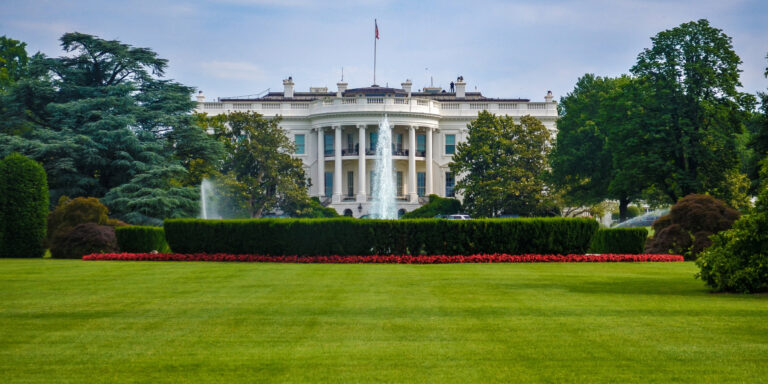Today, President Biden ceremonially signed Executive Order (EO) 14124, extending the White House Initiative on Advancing Educational Equity, Excellence, and Economic Opportunity through Hispanic-Serving Institutions (HSIs) to these educational institutions. It will be founded with about 20 institutions and advocates for the Latinx community. President Biden and Vice President Harris also plan to announce nearly $19 million in transformational investments to build research infrastructure at five HSIs in Florida, Illinois, Texas, and Puerto Rico. These efforts build on the administration’s historic investment of more than $16 billion in more than 500 HSIs in 30 states, the District of Columbia, and Puerto Rico that educate more than 4.7 million students annually.
Over the past three years, President Biden and Vice President Harris have taken historic actions to expand opportunities for Latino families and communities. That includes creating more than 15 million jobs, 5 million of them for Latinos, and helping Latino entrepreneurs launch new businesses the fastest. . This rate has improved in more than a decade as we work to address our broken immigration system and ensure fair educational opportunities for our students.
Today, the Biden-Harris Administration announced new measures to advance educational opportunities for HSI students and give them a fair chance to achieve the American Dream.
Promoting educational equity, excellence, and economic opportunity through HSI
With more than a quarter of our students being Latino, HSI is a powerhouse of economic mobility, pushing many students from low-income backgrounds and first-generation college students into good jobs and bright futures. . Today, President Biden will ceremonially sign EO 14124 to strengthen the federal government’s commitment to advancing opportunities for HSIs and the students they serve.
The EO creates a new initiative and first-ever Presidential Advisory Council on HSI to:
Raise awareness of the opportunities for HSIs to participate equally in federal programs and strengthen HSIs’ ability to meet the educational needs of their students. Identify best practices for HSI to scale up effective strategies, programs, and initiatives that support educational success and economic mobility. Improve HSI’s ability to align its program offerings with the economic needs of national and regional economies, particularly in science, technology, engineering, mathematics, and education. Coordinate efforts to help HSI become or remain a financially secure institution. Cross-sector collaboration between HSI and charities, public sector and private sector organizations. Strengthen federal recruitment efforts at HSI and create accessible and equal pathways to federal career opportunities for HSI students, faculty, staff, and alumni. Provide tools, data, and analysis. Support HSI in improving educational equity, excellence, and economic opportunity for students.
Additional $19 million invested in HSI research infrastructure
To remain the most competitive economy in the world, the nation’s most comprehensive higher education institutions must continue to lead in research and development. Yet too many HSIs report that unmet infrastructure needs are hindering their ability to engage in research that advances the university, students, and the nation as a whole.
To address these needs, the Biden-Harris Administration established the Department of Education’s Research and Development Infrastructure Program (RDI) for colleges and universities that play a central role in educating students from diverse backgrounds. The program provides funding to Historically Black Colleges and Universities (HBCUs), Tribally Controlled Universities (TCCUs), and Minority Educational Institutions (MSIs) (including HSIs) to increase research productivity, faculty expertise, Make transformative investments in research infrastructure, including graduate students. programs, physical infrastructure, human capital development, and partnerships that lead to increased external funding.
Today, the Biden-Harris Administration announced approximately $19 million in new grants to five HSIs to build research and physical infrastructure, including:
Florida Atlantic University in Boca Raton, Florida, received $1.1 million. National Lewis University in Chicago, Illinois received $3 million. Sam Houston State University in Houston, Texas received $5 million. Texas A&M University-Corpus Christi, Corpus Christi, Texas, received $4.7 million. Puerto Rican students at the university’s Rio Piedras campus received $5 million.
The $19 million grant to HSI was part of a $49 million RDI grant to 13 HBCUs, TCCUs, and MSIs.
Building on historic investment in HSI
Today’s announcement builds on President Biden and Vice President Harris’ historic investment of more than $16 billion in direct funding to HSI through the Coronavirus Relief Fund and the Department of Education’s Federal Grant Programs Fund.
The graph below breaks down funding to date by state.
Total funding received by HSI in the state AR $11,356,918 AZ $739,602,657 CA $6,389,050,269 CO $290,670,467 CT $81,522,902 DC $10,396,350 FL $1,524,890,025 GA $96,526,460 ID $ 12,4 77,969 IL $664,298,648 IN $20,049,711 KS $20,869,761 MA $110,295,475 MD $68,836,836 MN $12,999,876 NC $10,750,057 NE $1,211,270 NJ $582,987,07 6 New Mexico $399,198,109 Nevada $336,899,054 New York $327,800,182 OH $875,529 OK $9,372,922 OR $58,864,009 PA $66,357,824 PR $1,135,872,342 RI $48,066,707 TN $7,3 83,933 TX $3,433,719,411 VA $14,730 ,892 WA $124,035,244 WI $23,119,648 Total $16,635,088,533 /Public. This material from the original organization/author may be of a contemporary nature and has been edited for clarity, style, and length. Mirage.News does not take any institutional position or position, and all views, positions, and conclusions expressed herein are those of the authors alone. Read the full text here.
Source link


